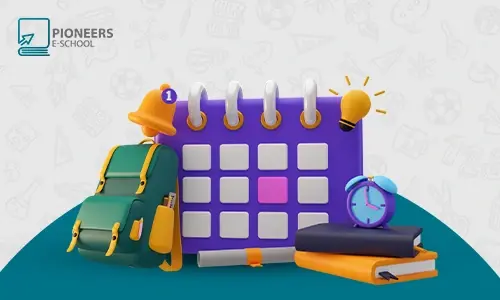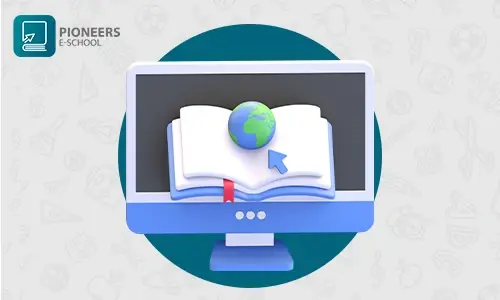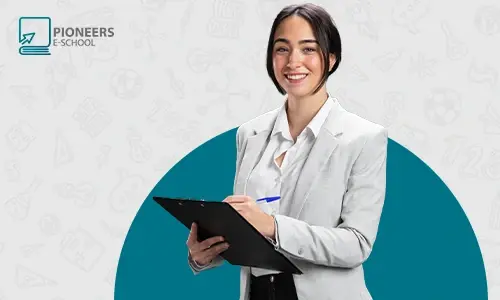In this era of advanced technology and constant change, the world is rapidly evolving and undergoing radical transformations in all fields, including education. The effectiveness of the teaching process and classroom management has become a dilemma faced by many new teachers in their profession.
Technology keeps up with the modern shifts in education, introducing innovative teaching methods aimed at enhancing student interaction and enriching their learning experience. Therefore, new teachers must acquire new teaching strategies and develop classroom management skills to keep up with this progress and provide an inspiring and effective learning experience for their students.
In this article, we will explore a set of innovative teaching strategies and essential skills that new teachers should possess to effectively organize and manage the classroom. We will look at how to implement technology in the educational process and use it to enhance interaction and deepen learning. We will also explore effective planning methods, time management, and dealing with challenges that may arise in the classroom.
What is meant by educational strategy?
Educational strategy refers to the method or plan adopted by a teacher to guide and organize the process of teaching and learning in the classroom. It is a set of steps, methods, and tools used by the teacher to achieve specific learning objectives and meet the needs of students.
Educational strategies aim to enhance student engagement, motivation, and the development of their educational and social skills. The strategy should align with the students' needs and the specific learning objectives in the classroom.
Top 10 modern and innovative educational strategies
There are many modern teaching strategies that can help enhance the learning process and achieve better outcomes. Here are some of the most important modern and innovative educational strategies:
-
Interactive learning
Interactive learning is a modern teaching strategy that aims to encourage active participation and interaction of students in the learning process. This strategy focuses on creating a classroom environment that encourages students to express their opinions, ideas, and share knowledge with other students and the teacher.
To implement interactive learning, various methods and techniques can be used, such as:
- Dividing students into small groups to work together on specific projects or tasks.
- Organizing interactive discussion sessions on educational topics, where students are encouraged to ask questions and exchange ideas with their peers.
- Using voting tools or interactive technologies like tablets to collect students' opinions and survey their thoughts in real-time.
- Utilizing educational games and interactive activities to enhance student participation and interaction and deepen their understanding of concepts.
- Providing opportunities for students to apply the concepts and knowledge they have learned in practical contexts, whether through simulations, field trips, or applied projects.
-
Numbered Heads Together Strategy
The Numbered Heads Together strategy is an instructional strategy that promotes collaboration and active participation in the classroom. This strategy aims to enhance interaction among students and motivate them to collaborate in problem-solving and concept discussions. The strategy distributes responsibility among team members and encourages their active participation.
Here are the steps to implement the Numbered Heads Together strategy:
- Divide students into small teams: Form small teams consisting of 4 to 5 students in the classroom.
- Number the team members: Assign numbers to each team member from 1 to the total number of team members. Numbered cards or numbered labels can be used.
- Present the task or question: Introduce a task or question that requires thinking and student engagement.
- Team discussion: Allow students time to interact and collaborate within their teams. Students work together to find the correct answer or solve the problem.
- Questioning and selecting the spokesperson: Ask one team member with the number 1 to speak and explain the answer or solution to the class. A new spokesperson is chosen for each new question posed by the teacher.
- Assessment and follow-up: Evaluate team performance and provide positive feedback and comments. The process can be repeated with new questions or tasks.
-
Project-Based Learning
Project-based learning is a teaching approach that aims to enhance student engagement and the application of concepts and knowledge in a practical and real-world context.
This approach involves teaching students through the execution of a project or task that requires them to investigate, research, and apply acquired skills to solve a problem or produce a tangible outcome.
Project-based learning has several advantages, including:
- Project execution based on interaction and collaboration among students
- Linking theoretical concepts to practical application in authentic contexts
- Developing various skills such as planning, research, collaboration, analysis, and innovation
- Allowing students the freedom to showcase creativity and innovation in their solutions
- Analyzing and evaluating information and data available to students to make appropriate decisions.
-
Technology-Based Learning
This strategy represents the latest developments in the field of education, where technology is used to enhance and improve the learning experience. It involves the use of electronic devices such as computers, tablets, software, and educational applications.
Technology-based learning strategy provides a variety of benefits and opportunities for teachers and students, including:
- Enhancing students' technical skills and effective use of modern technological tools.
- Providing diverse and rich learning resources, such as educational videos, interactive materials, and virtual simulations, to enhance students' understanding and comprehension of concepts.
- Enhancing interaction and participation in the classroom through the use of interactive learning tools and online educational platforms.
- Promoting self-directed learning, allowing students to access learning resources independently and at any time, and providing opportunities for individualized learning according to each student's pace.
-
Flipped Learning
Flipped Learning is a strategy that transforms the traditional learning process. In this strategy, students take on a more active role in exploring and understanding concepts and information before they are formally presented by the teacher in the classroom.
In Flipped Learning, the teacher provides pre-recorded educational resources to students, such as videos or presentations, explaining the fundamental concepts and presenting basic information. The teacher collaborates with students to provide these resources and guide them to additional learning sources.
Afterward, students can explore, apply, and solve problems related to the concepts in the classroom with the assistance of the teacher. Classroom time is allocated for interaction, personalized guidance, discussing complex concepts, and practical application. This interactive approach enhances student interaction, knowledge exchange, and the development of critical thinking skills.
-
Popsicle Sticks Strategy
In an educational context, the Popsicle Sticks strategy refers to a method used to randomly distribute roles and encourage student participation. Students' names are written on popsicle sticks, and then students are randomly selected when there is a need for speaking or participating in a discussion.
There are several benefits to using the Popsicle Sticks strategy in the classroom:
- Encouraging balanced participation: Using popsicle sticks helps achieve fair and random distribution of participation among students.
- Enhancing interaction and participation: The popsicle sticks system encourages students to be prepared to participate in class.
- Promoting sound balance: Using popsicle sticks helps ensure sound balance in classroom participation.
- Enhancing preparedness and engagement: Once students know they may be selected to participate, they will be more prepared to engage in lessons and activities.
-
Problem-Based Learning
Problem-Based Learning (PBL), also known as problem-solving learning, focuses on providing students with opportunities to solve real or realistic problems. This strategy aims to develop critical thinking, creativity, collaboration, and problem-solving skills in students.
This strategy involves several essential steps:
- Problem identification: The problem that students will work on is defined.
- Problem analysis: Students are asked to analyze the problem, understand its causes, and potential consequences.
- Student responsibility: The responsibility for solving the problem is transferred to the students.
- Creative thinking and proposing solutions: Students are encouraged to use creative thinking to generate innovative solutions to the problem.
- Solution implementation: The proposed solutions are practically implemented. Students participate in applying the solutions and evaluating their effectiveness and suitability for the given problem.
-
Active Learning
Active learning is an educational approach that encourages students to actively participate and interact in the learning process. It revolves around engaging students in learning activities that require them to think, analyze, and apply knowledge practically. Here are some derived strategies from active learning:
- Providing opportunities for students to face challenging and complex problems.
- Encouraging students to engage in group discussions on learning topics.
- Encouraging students to work together in small groups to accomplish specific learning tasks.
- Providing opportunities for students to apply the concepts and knowledge they have learned in practical contexts.
- Performing specific hands-on activities such as gathering and categorizing information, preparing reports, or conducting experiments.
-
Fishbowl Strategy
The Fishbowl strategy is one of the interactive strategies that aim to encourage discussion and collaboration among students. This strategy is characterized by arranging students in a central circular formation resembling a fishbowl, where a limited number of students in the center participate in the discussion or debate, while the other students sit in an outer circle, listen, and observe.
To implement the Fishbowl strategy, the following steps can be followed:
- Identify a specific topic or question that can be discussed and analyzed by students.
- Divide students into two groups. The first group sits in the inner circle (the fishbowl), and this group actively participates in the discussion. The second group sits in the outer circle, observing and listening.
- Launch the discussion among the members of the fishbowl. They are encouraged to express their opinions, ideas, and share supported information and evidence.
- Students in the outer circle follow the discussion, observe, and listen to their peers' opinions and perspectives in the fishbowl. They can also take notes of new observations and ideas raised during the discussion.
-
6 Thinking Hats Strategy
The Six Thinking Hats strategy is a powerful tool for promoting creative and analytical thinking among students. This strategy uses six different hats of different colors, each representing a specific type of thinking. Here is an explanation of each hat:
- The Blue Hat: The Blue Hat represents strategic and planning thinking. Students are asked to develop strategies and plans to deal with the presented problem or topic.
- The Red Hat: The Red Hat represents emotional and intuitive thinking. Students need to express their feelings and provide personal opinions without analysis or interpretation.
- The White Hat: The White Hat symbolizes realistic and information-based thinking. Students are required to present facts and available information and provide a realistic analysis of the topic.
- The Yellow Hat: The Yellow Hat represents positive and beneficial thinking. Students are asked to focus on the positive aspects, advantages, and potential benefits of the presented topic.
- The Black Hat: The Black Hat represents critical and analytical thinking. Students should focus on the negative factors, potential problems, and critical analysis of the challenges related to the topic.
- The Green Hat: The Green Hat represents creative and innovative thinking. Students should generate new ideas.
These are some of the best modern teaching strategies that play a crucial role in achieving a fruitful and successful learning experience. These strategies stand out for their emphasis on student interaction, active participation, and promotion of deep learning and practical application.
However, teachers also face a significant challenge in effectively implementing these strategies to ensure the desired outcome. This, in turn, brings us to the skills that every teacher should possess in order to efficiently and effectively manage the classroom.
Top 10 Skills for New Teachers in Classroom Management
Effective classroom management skills for new teachers encompass a wide range of abilities and competencies needed to handle the challenges of classroom management and ensure a productive learning environment. Here are some key skills:
- Planning and Organization: The teacher's ability to plan lessons and educational activities in advance, as well as effectively organize classroom resources and time.
- Time Management: The ability to efficiently organize time to ensure its effective utilization throughout the school day.
- Effective Communication: The ability to communicate clearly with students, actively listen to their diverse needs and interests, and provide effective guidance.
- Behavior Management: The ability to establish clear rules and expectations for behavior in the classroom, employ effective strategies for managing disruptive behaviors, and promote positive behaviors.
- Individual Interaction and Guidance: The ability to interact individually with students, provide necessary guidance and support to meet their educational and social needs.
- Assessment and Feedback: The ability to assess student progress, understand their educational needs, and provide constructive and appropriate feedback to support their development.
- Diversity Management: The ability to handle student diversity in the classroom, meet the needs of students with different levels and diverse cultural backgrounds.
- Use of Educational Technology: The ability to effectively use educational technology to enhance engagement and active learning.
- Challenge Management: The ability to deal with individual and collective challenges in the classroom, such as varying student levels and behavioral issues.
- Collaboration: The ability to collaborate with fellow teachers, school administration, and parents to support student learning.
In conclusion, modern teaching strategies play a vital role in enhancing the quality of education and achieving student excellence. In order for a teacher to be effective in managing and organizing the classroom, there are a set of skills that they should possess.
The most important of these skills include proper lesson planning and organization of educational content, effective communication with students and individual guidance, behavior management, and fostering a positive classroom environment. It also requires the ability to appropriately use educational technology and employ interactive and cooperative learning strategies.
Considering these skills as fundamental tools for achieving effective interaction and collaboration in the classroom, new teachers should invest in the development and enhancement of these skills through training and continuous learning.
Related Articles

2023-09-13
Mohamed Abdelsalam
most important daily, monthly, and annual tasks for student affairs
Student Affairs tasks in private schools include many activities and responsibilities aimed at providing an appropriate and supportive learning enviro...

2024-01-24
Mohamed Abdelsalam
comprehensive guide use of technology in education
Technology is a set of tools and means that help a person improve his life and facilitate his work. Among the areas of use of technology, education is...





